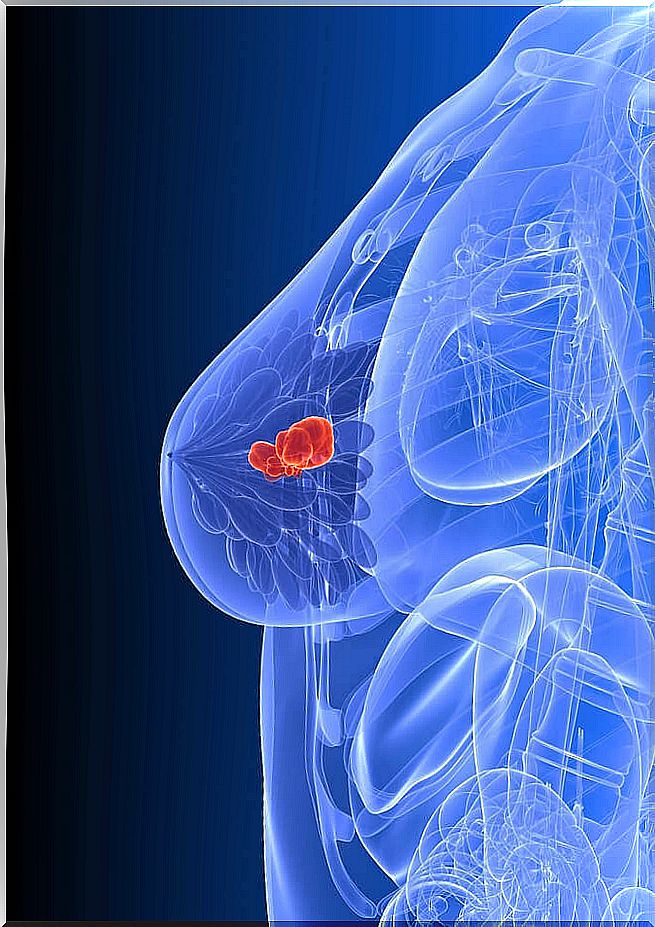BRCA1 And BRCA2 Genes And Breast Cancer

The BRCA1 and BRCA2 genes preside over the production of proteins that have the function of blocking the growth of tumors. In other words, the proteins encoded by this pair of human genes intervene to repair the damaged DNA to ensure the stability of the genetic structure of the cells.
Like any genetic material, however, the BRCA1 and BRCA2 genes can undergo a series of mutations or alterations in their structure and become inactive. When this happens, they are no longer able to perform their coding function in the synthesis of DNA repair proteins.
The direct consequence is that cells are more likely to develop further genetic alterations that can lead to cancer. In particular, mutations in these two genes represent an increased risk of breast and ovarian cancer,
Triple negative breast cancer and BRCA1 and BRCA2 genes
Triple negative breast cancer is a breast cancer in which none of the receptors usually found in this disease are present. Therefore, there is no overexpression of either the progesterone or estrogen receptors or the HER2 receptor. This tumor form, at the moment, has a worse prognosis, with a therapeutic approach that is mainly limited to chemotherapy.
Triple negative breast cancer accounts for about 12-17% of total breast cancer cases. It is characterized by a high growth rate and a high ability to generate metastases. For this reason, together with the difficulty of treatment, it presents a worse prognosis than the others.
One of the most frequent molecular events in this type of cancer is the functional alteration of the BRCA protein. Among breast cancer patients with hereditary BRCA1 mutation, more than 80% have triple negative breast cancer. It is estimated that about 15% of ovarian cancer cases and 5% of breast, pancreatic and prostate cancers are hereditary with mutations in the BRCA1 and BRCA2 genes.

Treatment of triple negative carcinoma with mutation of the BRCA1 and BRCA2 genes
In December 2014 the marketing of olaparib (Lynparza) as monotherapy was approved for the treatment of advanced ovarian cancer with mutation of these two genes. On the basis of the results obtained, the efficacy of this drug was also tested in the treatment of relapsed breast cancer with mutation of the BRCA1 and BRCA2 genes.
With the maximum tolerated dose of olaparib capsules, which is 400 mg every 12 hours, an objective response rate was observed in patients with triple negative breast cancer of 54%. This means that 7 out of 13 patients reacted positively.
Other causes of alteration of the BRCA protein
In addition to mutations in these two genes, there are others that can cause abnormalities in the function of the BRCA protein. One of these is the methylation of genes, the addition of a methyl group (CH3-) to the upstream promoter of these genes.
A gene that is methylated, therefore, can no longer synthesize the protein that presides over the suppression of tumor growth. Methylation of the BRCA1 and BRCA2 genes has been found in various neoplasms:
- 5-20% of ovarian cancers
- 50% of stomach cancers
- 29-59% of breast cancers

Read also: Genetic mutations: what is it all about?
Conclusion
The BRCA1 and BRCA2 genes play a crucial role in the field of breast oncology. A high percentage of patients with breast cancer and alteration of this pair of genes – derived from mutation or methylation – have the triple negative form. In this case the prognosis is worse and the available therapies are more limited.
It is very important to continue research in this direction in order to be able to develop new therapeutic options and advance in the fight against cancer. The genetic aspect of breast cancer is a promising and yet to be explored area.









